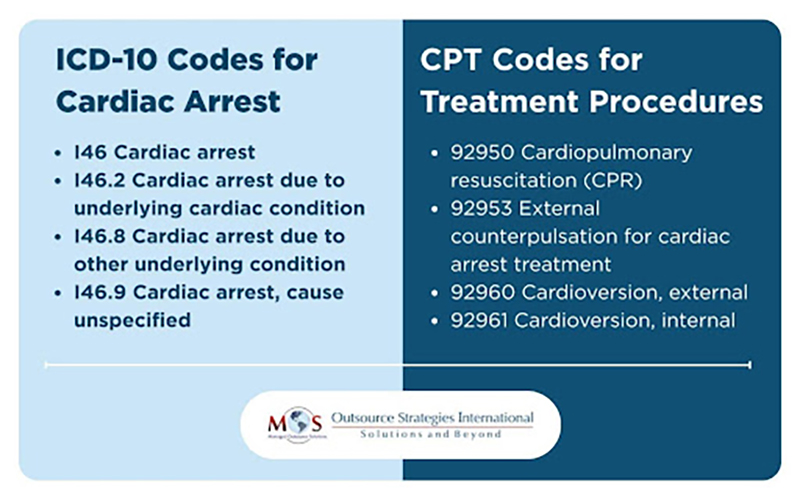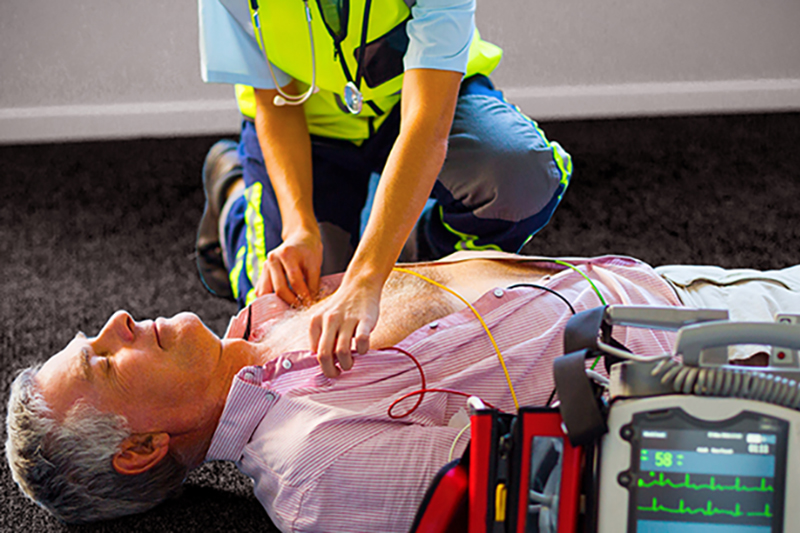It is estimated that more than 436,000 cardiac arrest deaths occur each year in the United States. Medical coding for cardiac arrest or heart failure is a crucial aspect of cardiology billing and coding. Primary care physicians or cardiologists treating heart failures can rely on comprehensive expertise of external coding experts to manage claim filing efficiently. Understanding the appropriate codes and their application is crucial to obtain the due reimbursement and stay compliant.
Understanding Cardiopulmonary Arrest
Cardiopulmonary arrest is more common in older men than women. It can be caused by a heart condition, or occur unexpectedly. However, the three main causes of circulatory collapse include – Arrhythmia and ventricular fibrillation, Enlarged heart (cardiomyopathy) and coronary artery disease. In addition, several lifestyle and hereditary factors like alcohol or drug abuse, family history of heart disease or cardiac arrest, high blood pressure and cholesterol, obesity and smoking could be responsible. Some people may experience heart failure with no risk factors at all. In some cases of sudden heart stoppage, there may be no symptoms. In certain other cases, symptoms of acute heart failure may be immediate and severe including – sudden collapse, no pulse/ breathing, loss of consciousness, shortness of breath, chest discomfort and weakness.
Acute heart failure diagnosis and treatment require prompt and accurate evaluation. Diagnostic tests for heart failure include: blood tests, electrocardiogram (ECG or EKG), echocardiogram, Chest X-ray, ejection fraction and cardiac catheterization.
For seamless cardiology medical billing and coding services
ICD-10 Codes for Cardiopulmonary Arrest
- I46 : Cardiac arrest
- I46.2 : ,due to underlying cardiac condition
- I46.8 : ,due to other underlying condition
- I46.9 : cause unspecified
CPT Codes for Treatment Procedures
- 92950 Cardiopulmonary resuscitation (CPR)
- 92953 External counterpulsation for cardiac arrest treatment
- 92960 Cardioversion, external
- 92961 Cardioversion, internal

Modifiers and Documentation Requirements
To ensure accurate cardiology insurance verification, detailed documentation is essential. Modifiers may be required to specify the setting, such as emergency response or hospital admission. Common modifiers include:
- 25 – Significant, separately identifiable evaluation and management service on the same day
- 59 – Distinct procedural service
Cardiology Billing Documentation Requirements for Cardiac Arrest
Proper documentation is critical for successful reimbursement and healthcare compliance in cardiology billing and coding.
The following guidelines should be followed:
- Patient Information: Document complete patient demographics, medical history, and previous cardiac conditions.
- Event Details: Include time and location of the heart stoppage, along with symptoms leading up to the event.
- Interventions Performed: Clearly state all medical interventions, including CPR, defibrillation, and medications administered.
- Response to Treatment: Document the patient’s response to emergency interventions and any complications encountered.
- Diagnostic Tests and Findings: Include results from ECG, blood tests, and imaging studies performed to assess cardiac function.
- Follow-up Plans: Detail any further monitoring, rehabilitation, or secondary treatments required.
Healthcare providers recommend adopting healthy lifestyle changes to prevent the risk for conditions such as high blood pressure and cholesterol, which can lead to heart failures.
Accurate cardiac failure coding and billing for cardiologists is essential for efficient reimbursement and compliance. Understanding ICD-10 and CPT codes for heart failure procedures, ensuring complete documentation, and following proper cardiology insurance verification processes can streamline billing and improve financial outcomes for healthcare providers.
Streamline your cardiology medical coding and insurance verification process.




